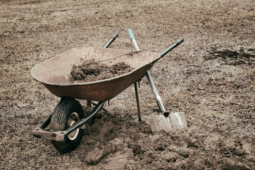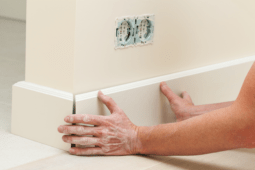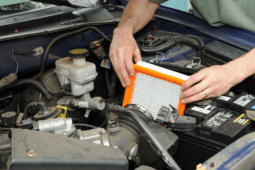ManMade Essential Toolbox: You Should Own a Serious Cordless Drill/Driver
Each week in 2015, ManMade is sharing our picks for the essential tools we think every creative guy and DIYer needs. We’ve selected useful, long-lasting tools to help you accomplish a variety of projects, solve problems, and live a hands on lifestyle that allows you to interact with and make the things you use every day.

I’m not going to insult you. You know the cordless drill/driver is the most useful, popular, and can’t-live-without-it portable power tool in the DIYer’s arsenal. It can do everything from drilling holes to driving screws to twisting wires to drilling bigger holes, and mixing paint, all in with a completely cord-free, clip-it-to-your-tool-belt ease. I wouldn’t hang a picture or a shelf without one (or two) and its certainly a tool that gets touched on nearly every project.
Right? Right. But if we’re sharing our picks for the most essential of tools, this guy’s gotta be on the list, so instead of convincing why you should own one, let’s turn our attention into making sure you own the right one, and know how to use it.

The anatomy of the cordless drill is simple: it’s a motor attached to a keyless chuck, that spins very fast and whose jaws accept all sorts of round or hexagonal things such as any manor of drill bits, driver bits, sanding drums, burnishing wheels, hole saws, and the like. It can help bore holes, that is, displacing the wood fibers through compression and moving them up the fluted shank of a drill bit. Or, it can cut holes through use of a Forstner bit, hole saw, or spade bit. All modern drills have a slip-able clutch that allows to apply the right amount torque to drive or drill, and a pressure-sensitive trigger so you can select the right speed for power or precision work.

So, with all the options, which one should you select? Unless you’re going to keep a diversity of drills and drivers around for specific tasks (impact driver, pocket driver, hammer drill), we suggest looking for an all-in-one, beefy model with the following features:
- 1/2″ ratcheting chuck
- Two Lithium-Ion batteries and included charger
- between 18-20 volts that can achieve 350-450 in-lbs of torque
- Hammering action (if possible)
Oh, and here’s another way of looking at it: you should expect to spend around $90-150. If it costs less that $75, you’re looking at the wrong tool.

The most important aspect of a drill/driver, which is designed to twists things, is torque, or twisting force. There are plenty of tests to assess torque, and your favorite magazines and review sites have posted the results. Go check them out. A hammering-action is nice, particularly if you live in an older home with plaster and lathe, or concrete block or masonry walls. But it can add some heft to the overall price. (But, if you ask me, its definitely worth it. I can’t count the number of projects and repairs that wouldn’t have been possible without this feature.)
Battery life, and number of batteries, are also extremely important, particularly when working with denser hardwoods, or larger hardware such as lag screws. Battery reversibility is also a nice feature; it allows you to load the battery in either direction, providing balance when using one hand, and an ease of access when working in tight places.

If we were going to buy a new 18 or 19volt driver, I’d look at the following models.
ManMade recommended:
- Makita XPH012 18V LXT Lithium-Ion Cordless 1/2-Inch Hammer Driver-Drill Kit – $99.00
- Note: comes with only one battery; add a second to make for a seriously powerful tool for a total of ~$140
- Milwaukee 2697-22 M18 18-Volt 1/2-Inch 2-Tool Combo Kit – 199.99
- Note: This two tool kit also comes with 18-volt impact driver, two batteries, and charger. A great buy. We’ve been using the older brother to this set for nearly 8 years in the ManMade workshop.
- Dewalt DCD771C2 20V MAX Cordless Lithium-Ion 1/2 inch Compact Drill Driver Kit – $110.99









